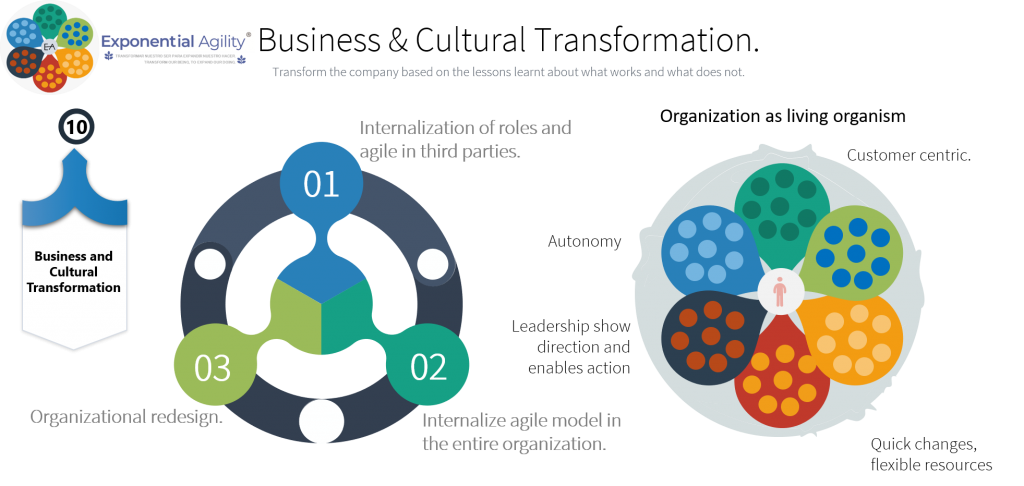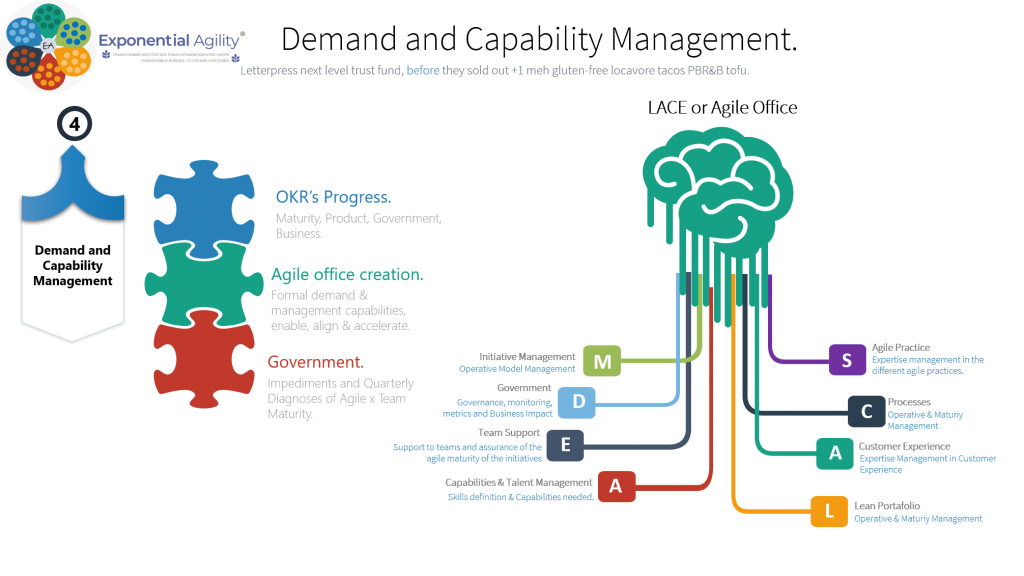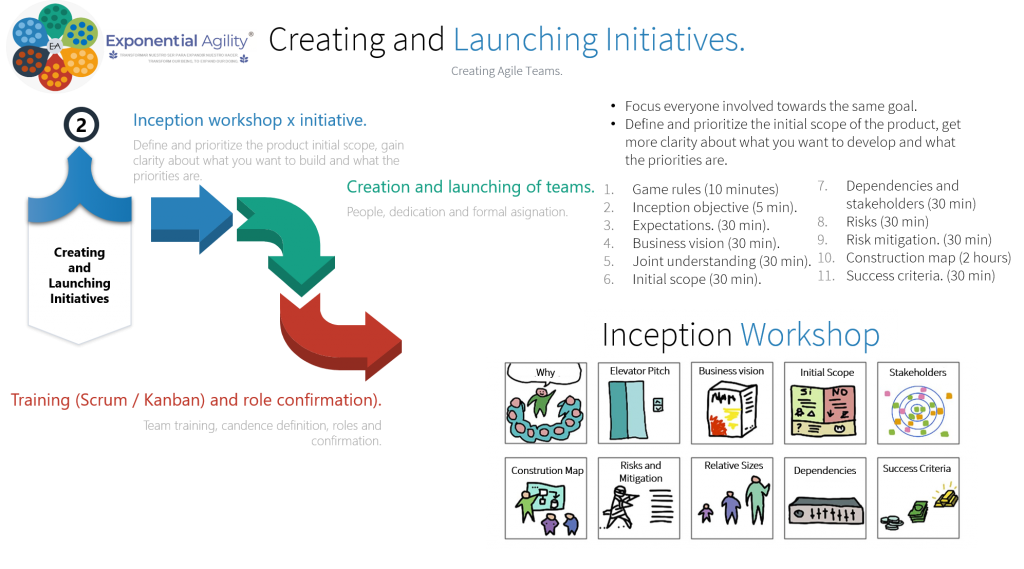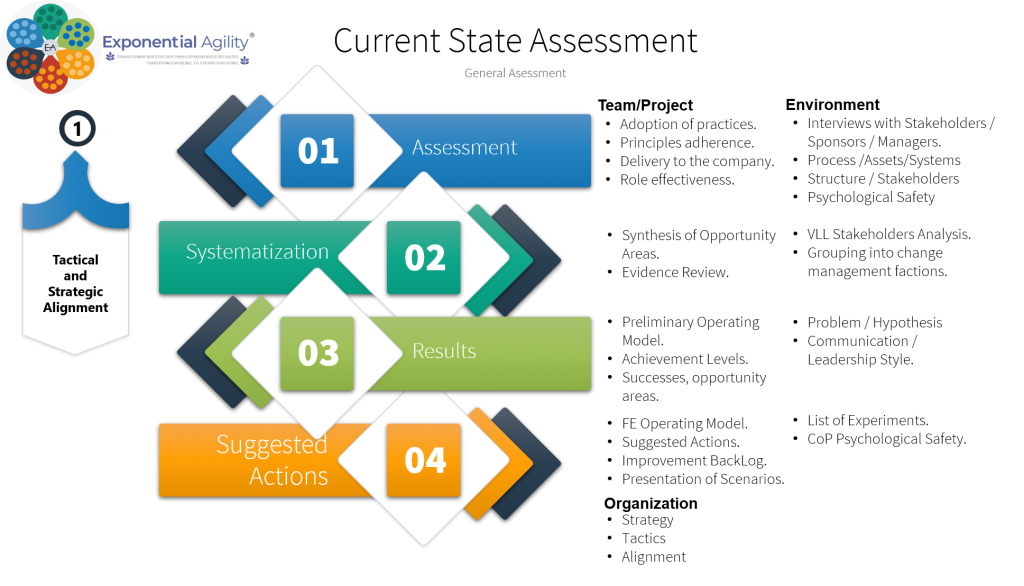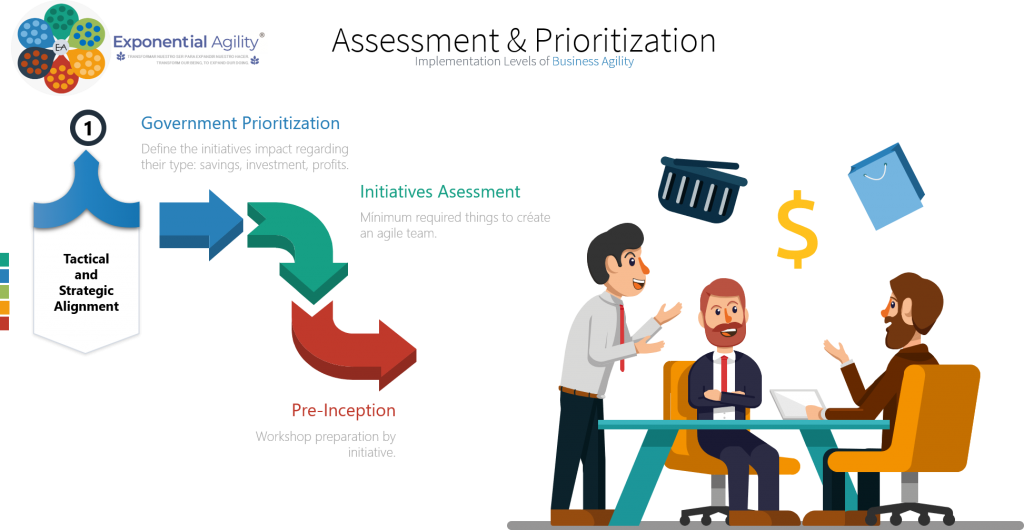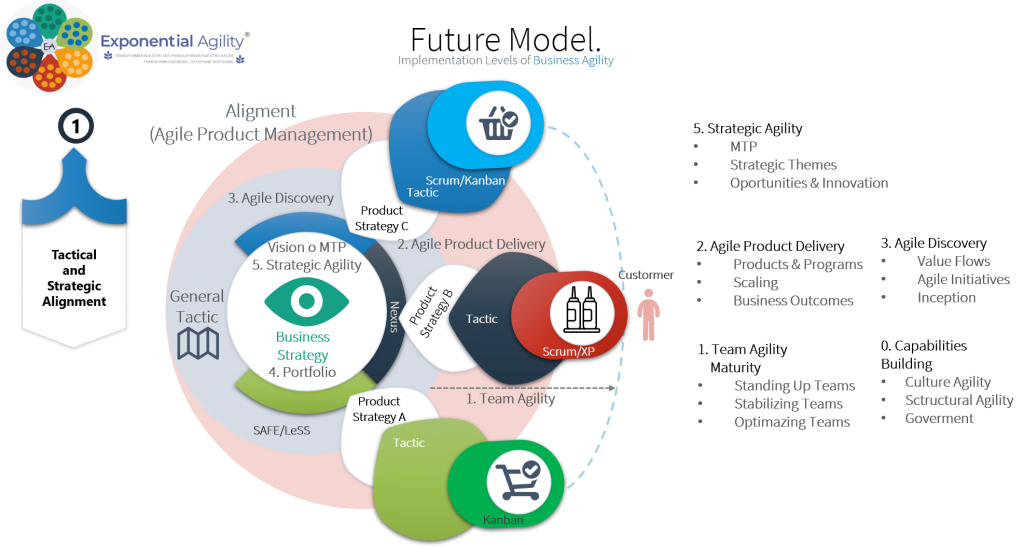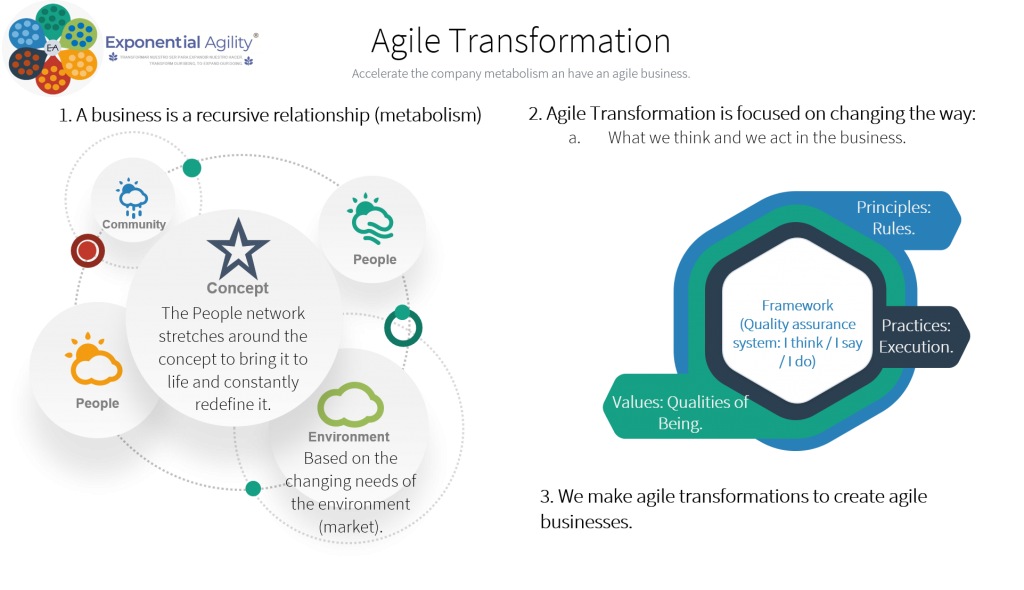La alineación, radica en el proceso de vincular los objetivos estratégicos de la organización, con los objetivos de cada individuo en la organización. Se requiere un vínculo estrecho entre la planeación, la ejecución y su constante sincronización. Esta dimensión implica asegurar la alineación y vinculación de los objetivos estratégicos, tanto vertical como horizontalmente, impulsando el progreso y las acciones en todos los niveles organizacionales.

La alineación no se trata acerca de que números hay que lograr, es acerca de crear claridad de que montaña escalar.
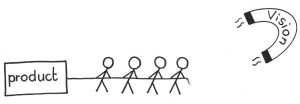
La práctica de gestión ágil de producto representa una herramienta que puede mantener un ambiente alineado, desde la estrategia general de la empresa, pasando por su táctica y a su vez en este paso la creación de la visión de producto, de cada iniciativa estratégica, su marco de visión de producto extendido y el modelo de negocio pertinente, para probar las hipótesis principales de la iniciativa, para posteriormente desarrollar los mapas de ruta, mostrando las ventanas de oportunidad y así trabajar directamente, con los equipos para que ellos definan el como alineados a estos artefactos.
La gobernanza adecuada aún garantiza la alineación, pero se guía por la flexibilidad y el empoderamiento en lugar de una imposición rígida. ¿Los equipos entienden su propio “sentido de propósito”?, es una pregunta que es necesario realizarse.

Una práctica poderosa que se puede realizar en el ambiente de trabajado específicamente para un equipo o conjunto de equipos, es la realización de “talleres de visión de equipo”, que consisten en contrastar la visión de producto que el dueño del negocio está buscando con una iniciativa en particular, pensar en el propósito y significado, la visión de producto, así el dueño de producto discute estos elementos y el modelo de negocio con el equipo en cuestión, además de la definición de lo que significa valor para el negocio, posterior a esta exposición se realiza una estructura 1-2-4-todos, esta manera el equipo o los equipos, pueden co-crear la visión de equipo, el propósito y el significado necesarios para la construcción efectiva del producto, exponiendo las capacidades clave para ello, en este enfoque el equipo puede encontrar que existen ciertos recursos o capacidades/habilidades faltantes en el equipo, así como riesgos que son necesario atender para acelerar la construcción del mismo, el dueño de producto discute esos elementos y se compromete con el equipo, para considerarlos, ello aumenta el compromiso y empoderamiento del equipo, que a la larga lo lleva al aumento de la dueñez o propiedad del mismo, es una práctica contundente para alinear el esquema, ya que requiere un compromiso del más alto nivel, a través del compromiso establecido por el equipo y la facilitación del dueño de producto.

Los ejecutivos de alto nivel deben hacer de la estrategia su prioridad número uno, y pueden tirar de las palancas para impulsar un cambio transformacional. En niveles más profundos, tales palancas no están disponibles, así que lo recomendable es concentrarse en el sentido de propósito del equipo, lo que quieren lograr durante el próximo período y luego trabajar para vincular esto con los objetivos estratégicos, la práctica de la gestión de producto es muy efectiva en ello.
Una sugerencia es discutir en conjunto el sentido de propósito de la organización, tal como se resume en la misión, cómo se relaciona el equipo con otras partes de la organización, también el propio sentido de propósito del individuo: lo que quiere lograr a corto y mediano plazo y cuándo, por qué, y cómo.

Pensar en la cadencia de los ciclos de inspección y adaptación que permitan una toma de decisiones basada en datos y resultados, de lo que funciona y no, de tal forma que el equipo de trabajo de estrategia sesione constantemente para acelerar, los ciclos de evolución de la empresa en función de los disparadores del mercado en beneficio de los clientes.
La capacidad de respuesta, ser receptivo implica la adaptación y realineación continua con el ambiente cambiante.
La responsabilidad, requiere de dueñez (propiedad) del equipo, sincronizando el progreso del equipo, cualquier indicador, ya sea anticipatorio o rezagado, debería ir seguido de discusiones en tiempo real, junto con el refinamiento de los planes y acciones de los involucrados.
Miguel Ángel Martínez Hernández, 15 de marzo de 2021.
Referencias:
- Ismail, I., Palao, F., y Michelle, L. (2019). Transformación Exponencial. México D.F.: Bubok Publishing SL.
- Lyngso, S. (2014). Agile strategy management: Techniques for continuous alignment and improvement. Boca Raton: CRC Press.
- Fernando, R. (2019). Agile strategy: How to create a strategy ready for anything. Harlow, England: Pearson.
- Lambert, D. (2020). Practical Guide to Agile Strategy Execution: Design, Architect, Prioritize, and Deliver your Corporate Future Successfully. CA: Independently published.
- Pichler, R (2016). Strategize: Product Strategy and Product Roadmap Practices for the Digital Age. Wendover, UK: Pichler Consulting.
- Wiraeus, D., y Creelman, J. (2019). Agile strategy management in the digital age: How dynamic balanced scorecards transform decision making, speed and effectiveness. Cham, Switzerland: Palgrave Macmillan.
- Porter, D. T., y Porter, M. E. (2015). Estrategia competitiva: Técnicas para el análisis de los sectores industriales y de la competencia. México D.F.: Grupo Editorial Patria.


